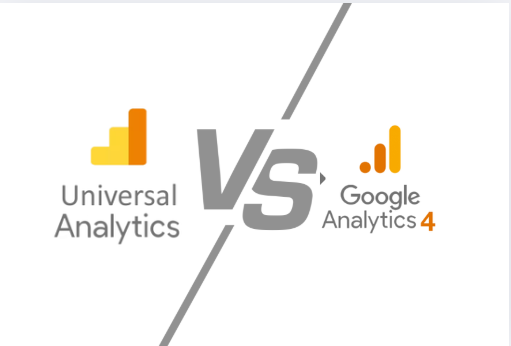Google Analytics is a widely used web analytics service that helps website owners and marketers track and analyze user behavior. In October 2020, Google introduced Google Analytics 4 (GA4), a major upgrade that replaced Universal Analytics (UA) and introduced event-based tracking, enhanced privacy controls, and predictive analytics. Since July 2023, GA4 has fully replaced Universal Analytics, making it the default analytics platform for businesses.
As part of our Google Analytics 4 series, this article explores the key differences between Classic Google Analytics also know as Universal Analytics (UA) and GA4, helping you decide which one is right for your business. For a comprehensive understanding of GA4’s features, setup, and best practices, refer to our Ultimate Guide to Google Analytics 4—your go-to resource for mastering GA4 and leveraging data-driven decision-making.
-
User Interface and Navigation:
One of the most notable upgrades in Google Analytics 4 (GA4) is its user interface and navigation. Universal Analytics (UA) had a complex, menu-heavy interface, making it difficult to find specific reports. GA4 simplifies navigation with an intuitive, streamlined menu, providing easier access to key features and reports. The updated UI focuses on custom exploration tools, allowing users to quickly analyze relevant data. -
Data Collection:
GA4 introduces an advanced data collection model that moves beyond cookie-based tracking. Unlike Universal Analytics, which relied on cookies to track user behavior, GA4 uses event-based tracking, allowing data collection from multiple sources, including mobile apps and websites. This enables cross-device tracking, improved user journey analysis, and better privacy compliance with GDPR & CCPA regulations. -
Event Tracking:
Event tracking in GA4 is fully automated and no longer requires custom coding or third-party plugins. Unlike Universal Analytics, where setting up event tracking required manual configurations, GA4 allows users to track interactions—such as clicks, video engagement, and scrolls—out of the box. Marketers and website owners can also customize event parameters for more granular insights without additional setup. -
Data Analysis and Reporting:
GA4 provides advanced data analysis tools, replacing UA’s rigid reporting system. The Analysis Hub in GA4 allows users to create custom reports, visualize trends, and segment data more efficiently. Additionally, GA4 integrates seamlessly with Looker Studio (formerly Data Studio), enabling users to build interactive dashboards and custom visualizations for deeper insights. -
Predictive Insights & Machine Learning:
One of GA4’s most powerful enhancements is its AI-driven predictive analytics. Unlike Universal Analytics, which focused on historical data, GA4 uses machine learning to identify trends, detect anomalies, and predict key business outcomes. It can automatically highlight fluctuations in conversion rates, unusual traffic spikes, and at-risk users—allowing businesses to proactively adjust their strategies.
Conclusion
While Universal Analytics (UA) was once a valuable tool for tracking and analyzing website traffic, Google Analytics 4 (GA4) has fully replaced it as Google’s default analytics platform. GA4 introduces advanced data tracking, enhanced privacy features, and AI-driven insights, making it a superior choice for modern businesses.
With its intuitive interface, event-based tracking, and powerful data analysis tools, GA4 provides a comprehensive view of user behavior—helping businesses make smarter, data-driven decisions. Whether you’re a small business owner or a marketing professional, migrating to GA4 is now essential to ensure accurate tracking, compliance with evolving privacy regulations, and access to future-proof analytics tools.
Need help with GA4 setup or audit? Optimize your tracking with our Analytics Configuration and Audit Services for accurate and actionable insights.




0 Comments